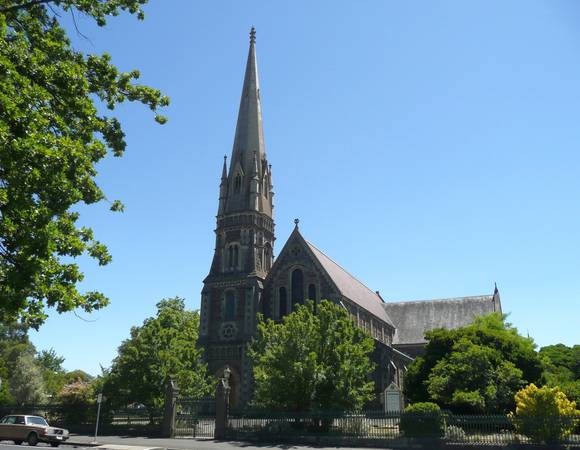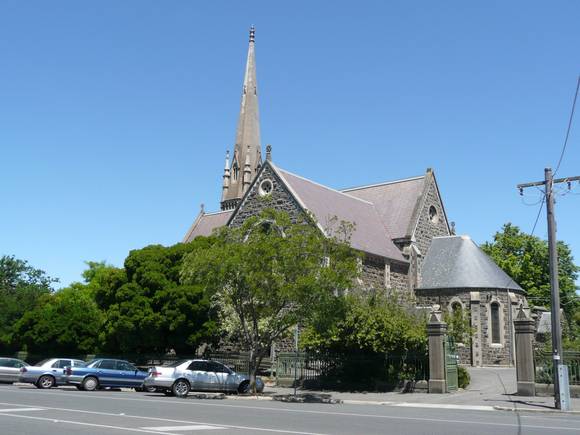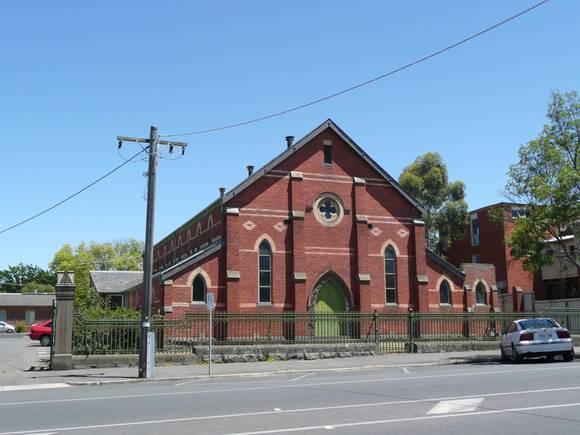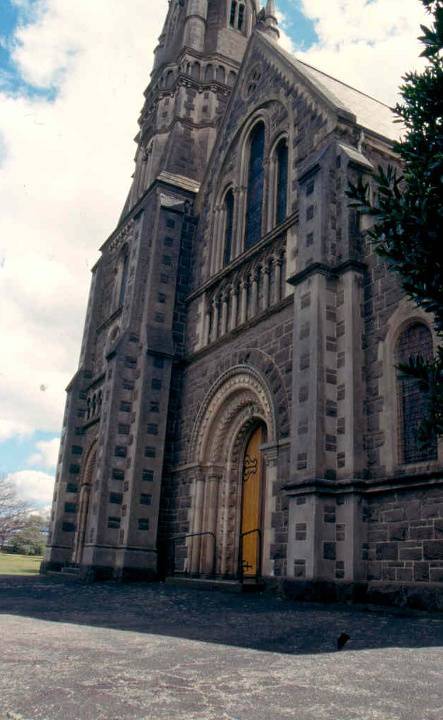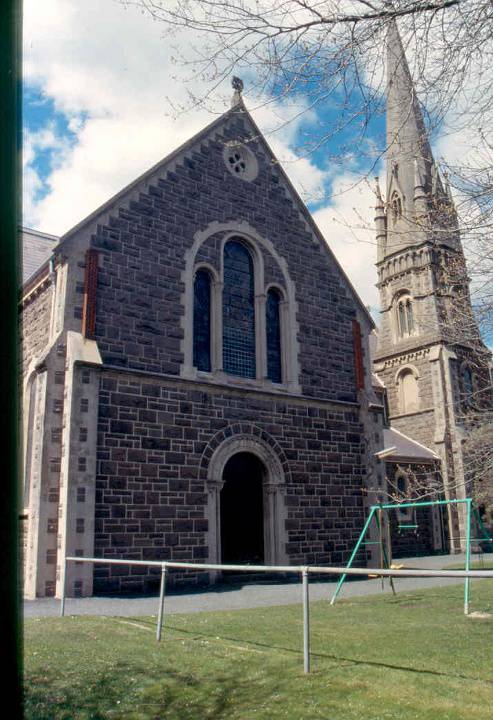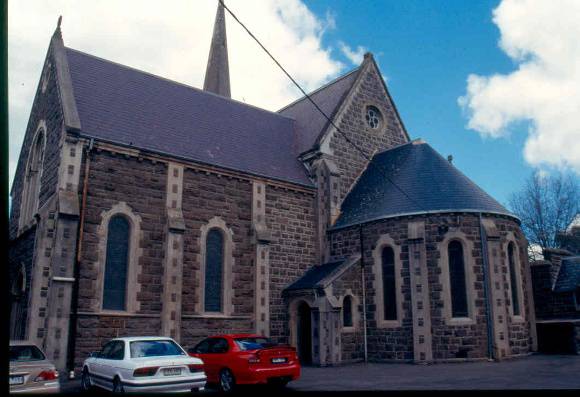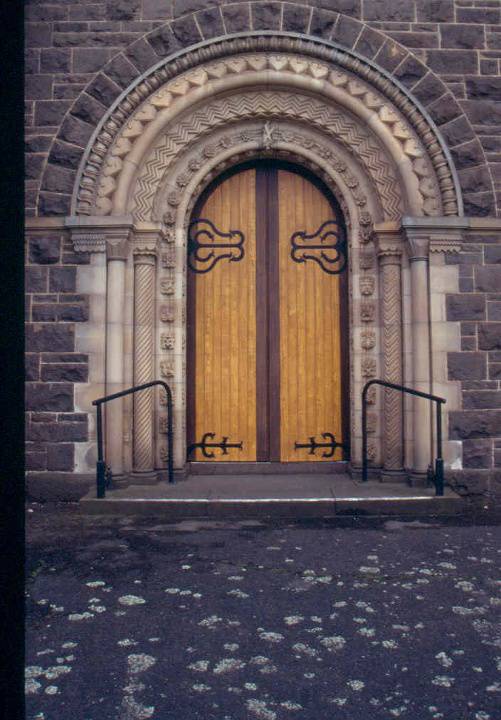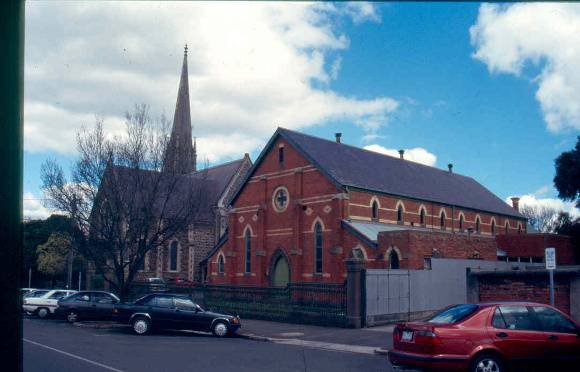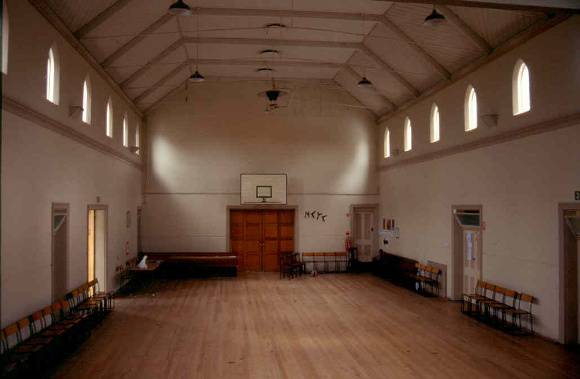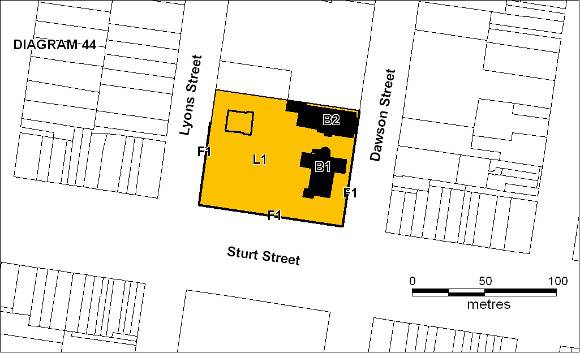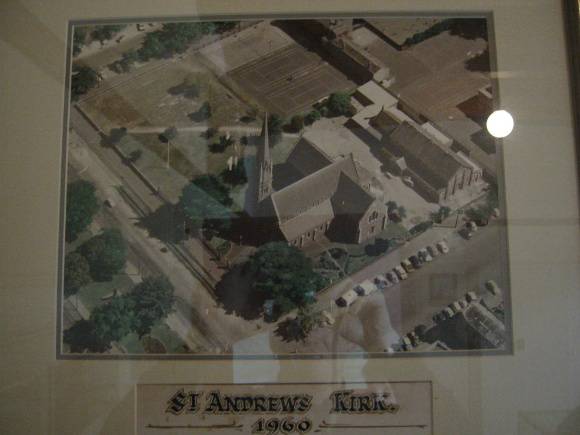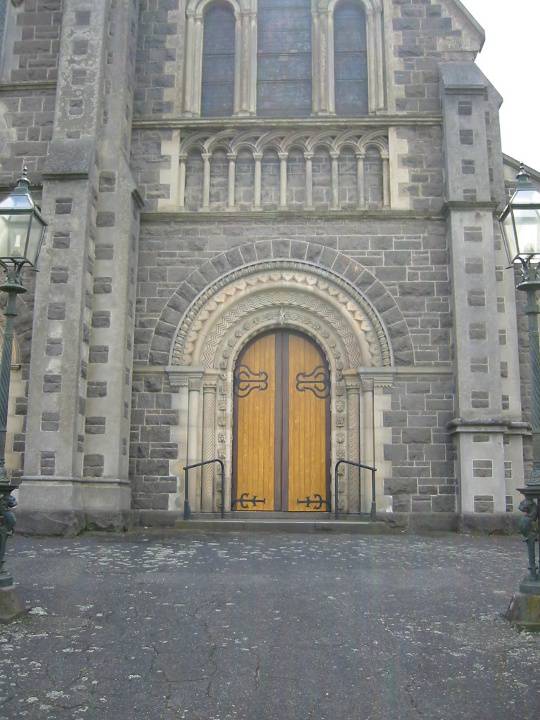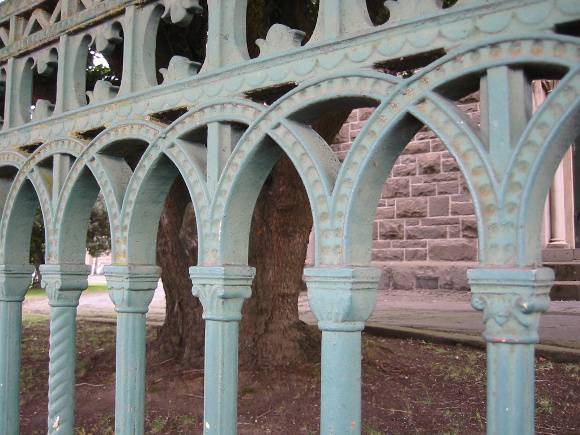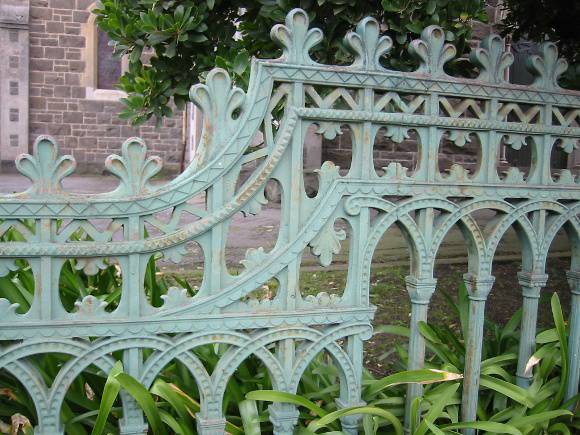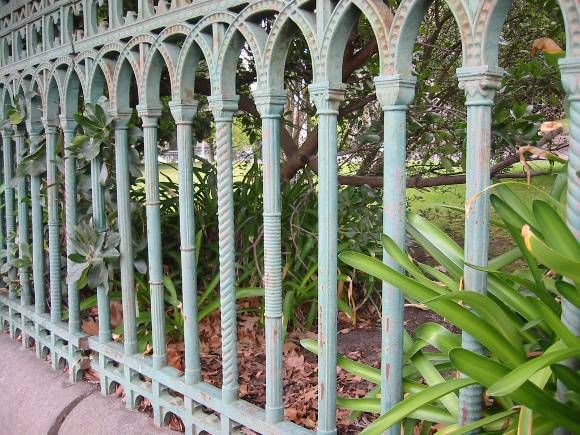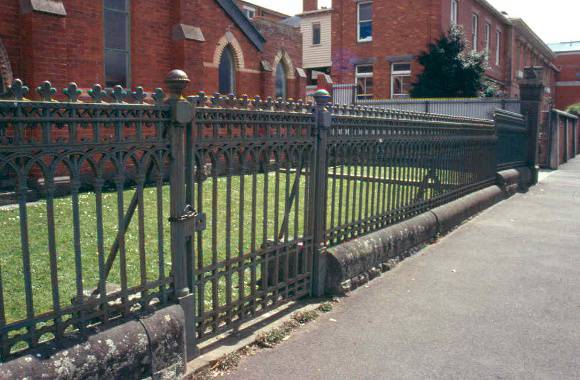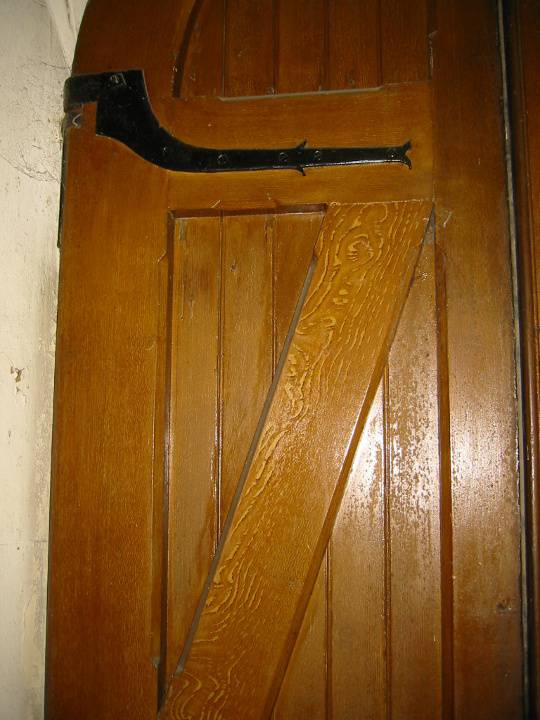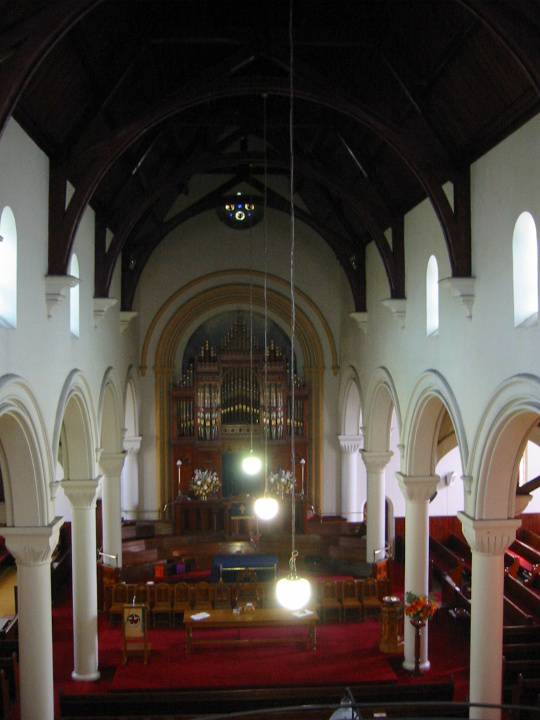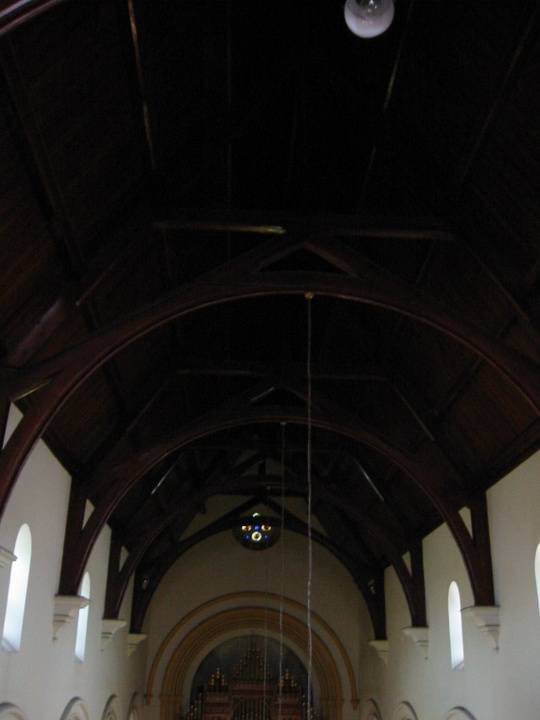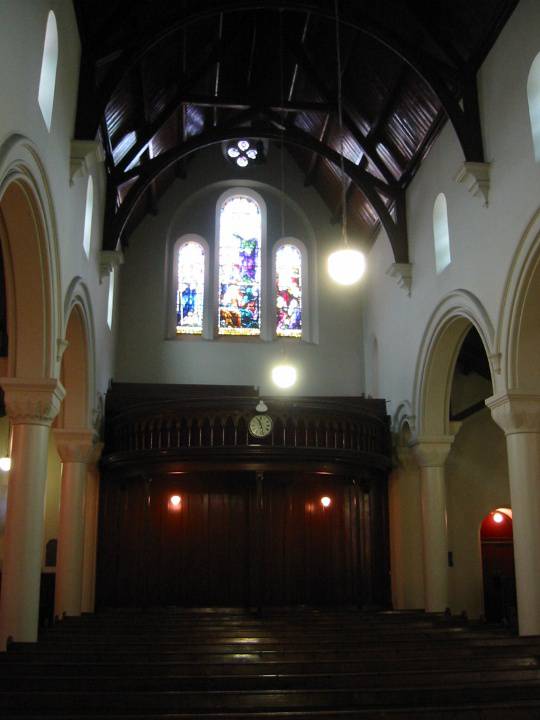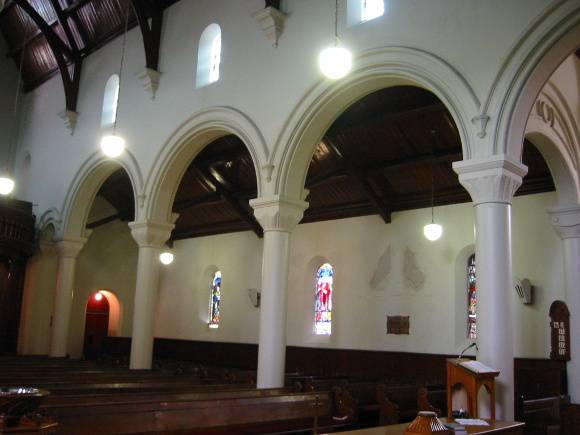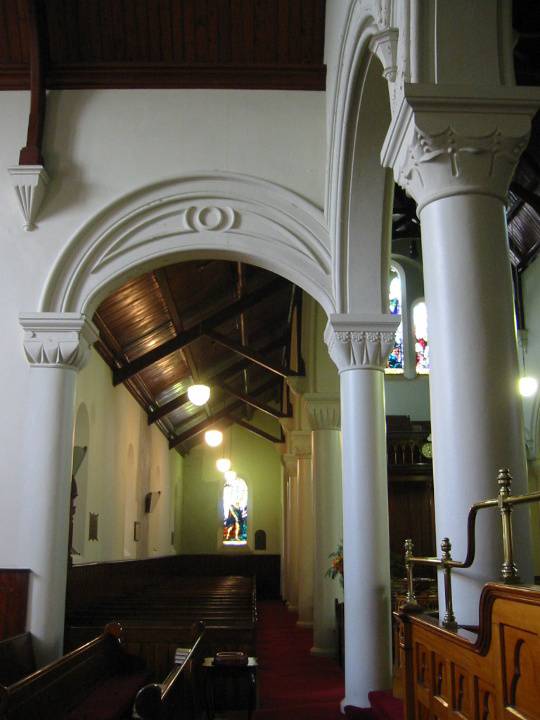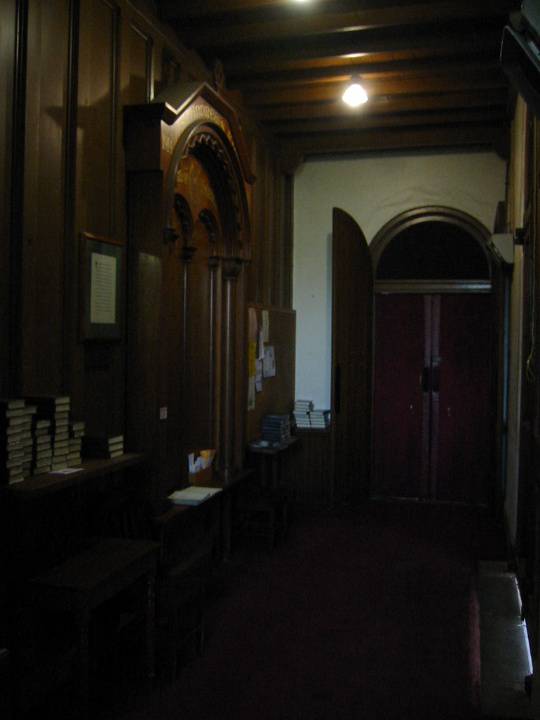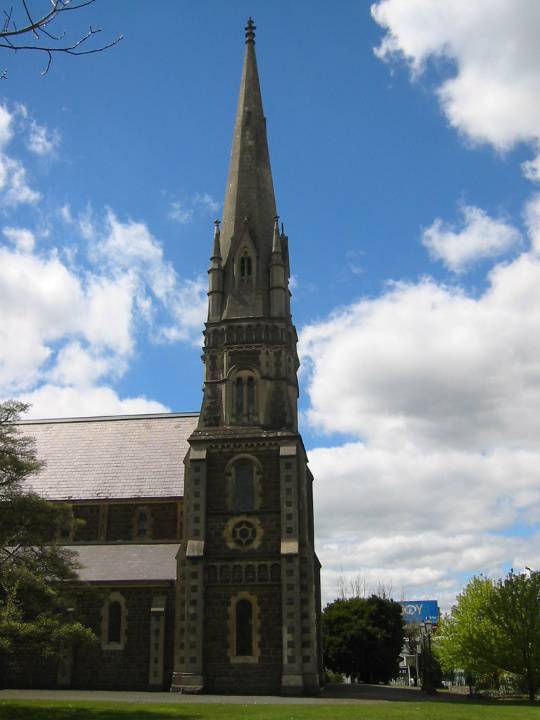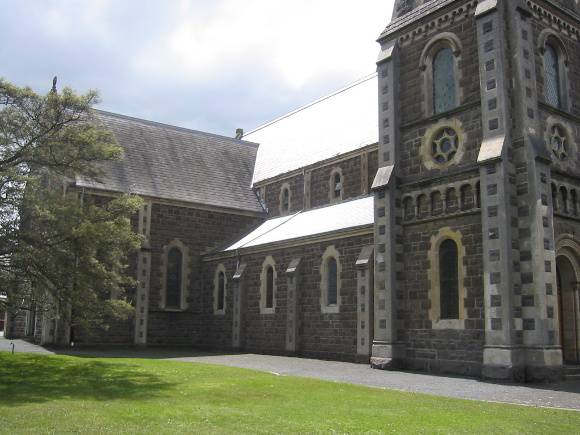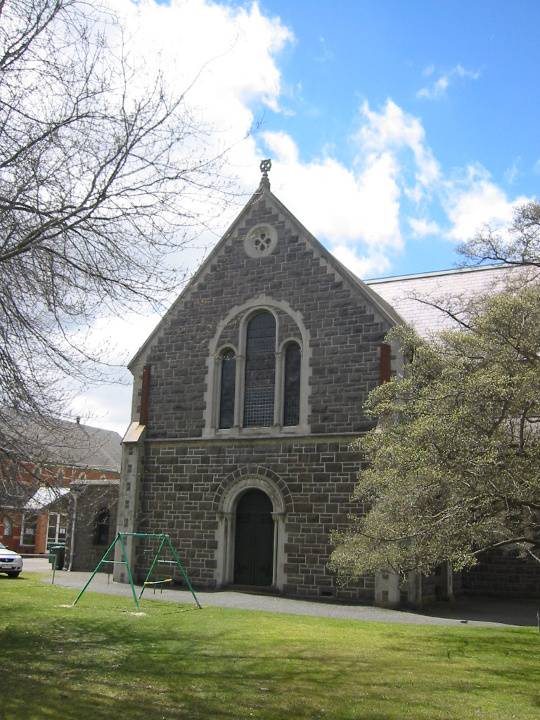| Back to search results » | Back to search page » |
|
ST ANDREWS UNITING CHURCH
Statement of Significance
What is significant? The congregation had its origin in 1855 when the Free Presbyterian
Church appointed a minister to the Ballarat goldfields. The first
regular minister, the Rev William Henderson, had been sent out by the
Free Church of Scotland to meet the needs of the colony and he held
the position for 26 years. He was the Moderator of the Free Church in
1855 and of the Presbyterian Church in 1872, and was a pioneer
minister of the State, who wrote extensively on religion and was
actively involved in the community. He also founded Ballarat College,
the oldest public school for boys in Ballarat in 1864. He died during
the construction of the spire of St Andrew's Kirk, and black bands
were inserted in the pinnacles to commemorate this event. Both the Presbyterian and Roman Catholic churches secured prime
corner sites in Sturt Street and the first building on the
Presbyterian site was a small timber church opened in 1858. This was
used as a Sunday School after the new church was erected, but was sold
and removed in 1875. The present Sunday School building was opened in
1885, situated to the north of the church, and the manse was erected
in 1886-88 to the west of the Sunday School in Lyons Street. Both
buildings remain on the church property, the latter however was
replaced post 1960. Ballarat College was also built on the
Presbyterian site at the corner of Sturt and Lyons Streets, occupying
this position from 1874 to 1912. Designed by Henry R. Caselli, the
building was used for part of the Sunday School after it was vacated
by the school. The school building was demolished in c.1949. The original church building consisted of a broad six bay nave with
side aisles. Nave arcading defines the three spaces internally, which
all contain timber lined ceilings. This original section, the later
tower and transepts are Norman Romanesque in style and they
incorporate a number of well executed Romanesque details. Described as
the largest and most complete Norman style church in Victoria (Lewis),
freestone details include elaborately decorated concentric orders,
blind arcading, arcaded corbel tables, stilted arches, wheel windows,
scallop and cushion capitals, chevron moulding and interlaced arches.
The last feature, particularly common in Romanesque work in England,
can be seen externally in the freestone blind arcading above the
entrance and in the cast iron fence, and internally on the timber
baptismal font and gallery. The main south portal is of particular
note with a profusion of finely carved elements and a centrally placed
figure of St Andrew, bearing a Saltire cross. Some of this detail,
including rosettes, was added to this elaborate doorway in 1883-4. The use of textured bluestone blocks and smooth freestone detailing
provides the building with both textural and colour contrasts. This is
evident throughout the exterior, particularly in the buttresses, where
bluestone blocks are embedded in freestone masonry. The tower, above the wheel window, and spire were added in 1884, and
the latter is the only element of the church building that is Gothic
in character. It incorporates pinnacles and lucarnes with pointed arch
openings, and rests on a Romanesque tower with blind arcading, arcaded
corbel table and round headed arch openings. Designed in conjunction
with the spire, the tower retains the Norman character of the rest of
the building, with the upper level of windows appearing to be altered
before construction from the original pointed arch design shown in drawings. A cast iron fence, by White?s Eagle Foundry, Ballarat, was
constructed along the Sturt and Dawson Street boundaries in 1902. It
reflects the style of the Norman church by incorporating interlaced
arches in its design. A pair of cast iron lamps, executed by the
Victoria Foundry in Leith, Scotland, were erected in the grounds at an
unknown date.
How is it significant?
Why is it significant? St Andrew's Kirk, Ballarat is of architectural significance for the
fine detailing incorporated both internally and externally. Freestone
mouldings, stained glass and wood carving have all been finely
executed by a range of craftsmen. The variety of mouldings, as
illustrated in the main portal to the south, is indicative of the
attention given to detail throughout the building. The concentric
arches incorporate chevron mouldings, rosettes, flowers and animals,
and side colonnettes are decorated individually with distinctive
shafts. Such individual treatment can be seen throughout, for example
above the entrance in a blind arcade, internally in the capitals of
the nave columns, in the carved timberwork of the pulpit, railings and
baptismal font, and in the surrounding cast iron fence. Stained glass
windows, dating from the early twentieth century, were executed by
significant firms such as Ballantyne and Sons, Edinburgh; Brooks
Robinson, Melbourne and Ferguson and Urie, Melbourne. As examples of
the work of important masters of the craft, and as a record of the
people who contributed to the beginning and development of the church,
these windows add significance to the church. St Andrew's Kirk is of architectural significance as an example of
the work of three Ballarat architects who between them designed many
of the city's significant religious and secular buildings from the
1860s to the 1880s. The original architect, Charles D. Cuthbert, also
designed the Gothic St Peter's Anglican Church in Sturt Street
(1864-7) and Caselli and Figgis designed the Gothic Congregational
Church (1881). Henry R. Caselli himself designed a large number of
churches in Victoria, with two Lombardic Romanesque examples in
Ballarat, the Ebenezer Presbyterian church, Armstrong Street South
(1862-3) and the Lutheran Church in Doveton Street (1876). St Andrew's Kirk, Ballarat is of historical significance as an
illustrative example of a building which resulted from the wealth
generated by the gold rushes in Ballarat. Many Scots were attracted to
Ballarat in the search for gold, and this, as well as the wealth
generated by large pastoral runs, is reflected in the construction of
this church. St Andrew's Kirk is of historical significance as a church which has
been in continual use as a place of worship since the completion of
the nave in the 1860s. It is significant for its association with Rev.
William Henderson, a prominent pioneer Presbyterian minister in
nineteenth century Victoria, and the presence of black bands in the
pinnacles of the church spire provide a permanent record of his death. St Andrew's Kirk is of historical significance due to the retention
of much of its original site in Sturt Street from Dawson Street to
Lyons Street, and to the presence of the adjacent 1885 Sunday School
building. The Sunday School is of historical significance for its
contribution to the spiritual life of the congregation and the
religious education of its young people.The manse on the site replaced
an earlier building. Both St Andrew's Kirk and St Patrick's Cathedral,
either side of Sturt Street, retain their spacious grounds,
illustrating the importance of these churches when land was reserved
in the 1850s. St Andrew's Kirk is of aesthetic significance as a major
ecclesiastical landmark in Ballarat and as one of the principal
buildings in an important and cohesive precinct. It is one of a number
of churches erected in Dawson Street, at the western end of Sturt
Street, in the latter half of the nineteenth century. These include
the former Congregational church (Caselli and Figgis,1881), St
Patrick's Roman Catholic Cathedral (1857-63) and the former Baptist
church (1866-7), and together these form a coherent group of
ecclesiastical buildings.
The foundation stone of St Andrew's Kirk, Ballarat was laid in
1862 and construction of the bluestone building with freestone
detailing was completed in 1864, on the corner of Sturt and Dawson
Streets, to designs by Charles D. Cuthbert of Ballarat. The porch and
vestry were added in 1873, the tower and spire in 1884 to designs by
Figgis and Caselli, and the transepts in 1889 to designs by Figgis and
Molloy. Finally the choir vestry was added in 1926.
St Andrew's Kirk, Ballarat is of architectural, historical and
aesthetic significance to the State of Victoria.
St Andrew's Kirk, Ballarat is of architectural significance as a
large Norman Romanesque church, which has been described as the
largest and most complete Norman style church in Victoria. The
adoption of the Romanesque style was unusual, the Gothic style being
more commonly adopted for ecclesiastical buildings throughout the
nineteenth and early twentieth centuries. Lombardic and Norman
Romanesque were occasionally adopted, with Norman examples including
the former Wesleyan Church in Palmerston Street, Carlton, designed by
Reed and Barnes in 1869, and a much later example, the third church
for St John's Roman Catholic church in East Melbourne, designed by W.
P. Connolly in 1930. At St Andrew's, the spire, added in 1884, is the
only section of the building to display Gothic characteristics.
Group
Religion
Category
Church


